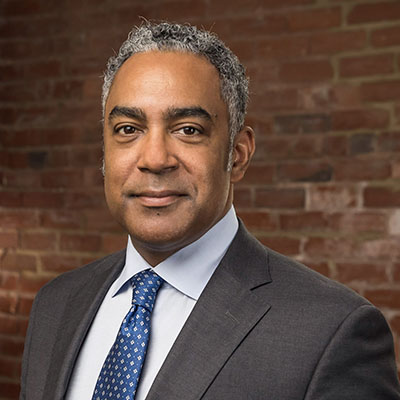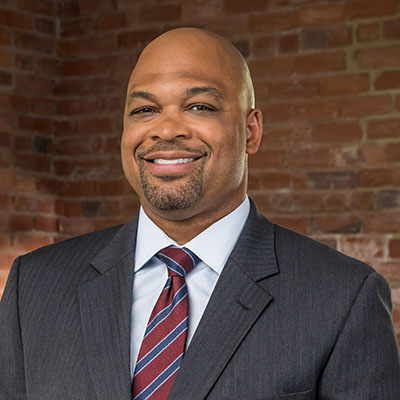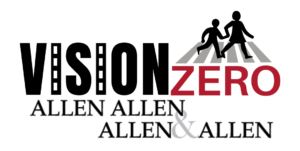
Within a just few months, two students at Virginia Commonwealth University (VCU) were tragically struck and killed by vehicles while walking. On VCU’s campus, students revealed that the campus roadways are rife with busy intersections, risky drivers, and distracted pedestrians. These dangerous conditions and the resulting fatalities have caused significant concern over pedestrian safety.
Following these deaths, council members in Richmond conveyed their frustration with the hazardous conditions and outdated traffic patterns in the city. Initially, the roads throughout Richmond were designed to allow travelers to get in and out of downtown as efficiently as possible. This strategy may have been useful at one point, but with the ever-expanding VCU campus, and the increased number of cyclists and pedestrians, it has become clear that the urban planning is outdated.
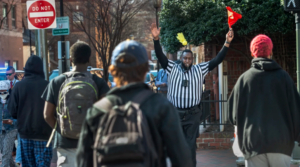
Police dressed as referees guide VCU students at crosswalks following student deaths. Photo credit: Axios
What action can be taken to protect pedestrians?
A long-term change needs to be implemented. Throughout Richmond, there are many opportunities for improvement, especially when applying Vision Zero policies.
What is Vision Zero?
Vision Zero is a strategy to eliminate all traffic fatalities and severe injuries while increasing safe, healthy, and equitable mobility for all. Vision Zero designs roadway infrastructure to prevent severe accidents before they occur. In Richmond, this means more red-light cameras, speed tables, and safer city blueprints. To carry this out, there have been proposals submitted to create a Richmond Department of Transportation.
The VCU Police Department is also placing a greater focus on enforcing traffic laws and educating residents on safe roadway behavior. There have been numerous police outreach events such as officers dressing as referees and blowing whistles when pedestrians crossed improperly. They will also be towing illegally-parked vehicles that prevent pedestrians from being able to see oncoming cars.
Why is VCU’s campus dangerous for a pedestrian?
There are many factors that make the VCU campus a hot spot for traffic problems, such as:
- Hundreds of thousands of drivers, cyclists, and pedestrians are in Richmond each week.
- VCU is often completing construction projects, making the roads a hotspot for accidents.
- Increased use of mobile devices makes some pedestrians less attentive.
- The original urban planning did not account for an ever-growing campus around Belvidere, which leads to the highway system
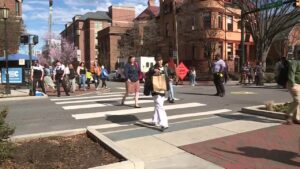
Photo credit: WTVR
This means that everyone plays a role in keeping one another safe. But is everyone taking this role seriously? There are many perspectives on unsafe roadway behavior on VCU’s campus. Many students fault cars for driving too fast throughout the area. However, others admit that many students cross the street when it is unsafe to do so. Ultimately, the best fix is roadway design.
At the intersection where a student was tragically struck, pedestrians have a walk signal at the same time that cars have a green light. When classes change on, there are hundreds of students quickly walking from place to place. But unlike other campuses, the urban setting required impatient students to cross busy streets swiftly.
Vision Zero works to combat issues such as these by designing safer roadways. With the implementation of high-visibility crosswalks, fatalities can be prevented. The City of Richmond has adopted a Vision Zero program and is in the process of adding traffic-calming measures that can save lives. Progress has been made, but students at VCU and people throughout Richmond hope to see it go further, and quickly.
If you have been injured in an auto accident through no fault of your own, you may be entitled to compensation. Call Allen & Allen today for a free consultation at 866-957-4230.


